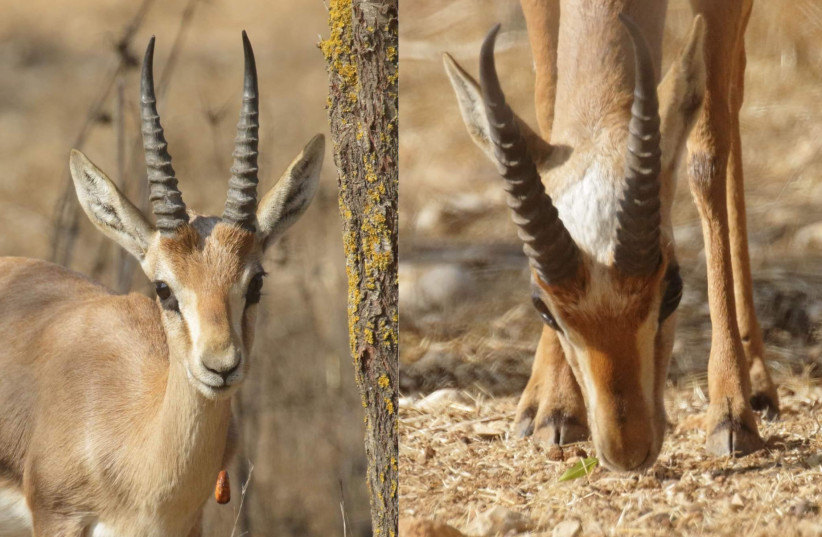If you're heading outdoors to get some fresh air and exercise this winter in Jerusalem, don't be too surprised if you're joined by some of Jerusalem's endangered mountain gazelles.
As temperatures drop and winter sets in across Israel's capital, the Gazelle Valley urban park becomes a running track for the mountain gazelles, of which only 5,000 are estimated to remain in their natural habitats in Israel.
Under the authority of the Jerusalem Municipality and the Society for the Protection of Nature in Israel (SPNI), the Gazelle Valley nature reserve spans 61 acres of land in southwest Jerusalem and is home to around 80 mountain gazelles that are able to live freely in the park, spread across the grounds.
How the seasonal shifts impact Jerusalem's gazelles
As the days become colder, mountain gazelles switch their diets from dry grass to leaves, almond pulp and olives, all of which provide them with the necessary nutrition to survive the cold temperatures of the Jerusalem winters.
But it's not just their diet that allows them to survive the season. During the winter, mountain gazelles will go for a daily "warm-up run" before the sun sets each night in order to ensure that they stay warm.

Earlier this week, SPNI Gazelle Valley manager Efrat Yagor was witness to one such run, in which the majority of the Gazelle Valley herd joined their pack leader and ran around the park, not stopping for several minutes.
The event was captured on video by park worker Inbal Shemesh, allowing others to witness the phenomenon, despite not being there at the right time to see it.
"We counted 54 deer that passed in front of the camera in less than a minute," said Shemesh. "The public is invited to come and enjoy the deer and the urban nature in general."
Why is the mountain gazelle endangered?
According to SPNI, the main danger that mountain gazelles currently face is the destruction of their natural habitat due to construction and road building.
In order to prevent the number of remaining mountain gazelle from falling even lower, SPNI - along with other entities - are fighting to save the open natural areas and ecological corridors that still remain by optimizing urban planning to ensure that it protects, rather than destroys, the natural home of the gazelle.
"There is still a lot of work to do, and areas defined as open areas are actually blocked by fences, infrastructure and the like," explains SPNI Urban Nature Department director Amir Balaban.
"Additional dangers to the gazelle are posed by illegal hunters, who hunt them mainly for the purpose of trading their meat and skins, as well as stray dogs and jackals that prey on the gazelle."
The Gazelle Valley nature reserve is located in the heart of Jerusalem and is open to the public, free of charge, seven days a week. Visitors can expect to see deer, birds, waterfowl, reptiles and other animal species, all roaming in their natural habitats.
Those who visit the urban park on weekends this winter will be able to meet the SPNI workers and volunteers in the field and learn more about the preparations that the gazelles, and the other animals, undergo in order to survive the Jerusalem winter in the wild.